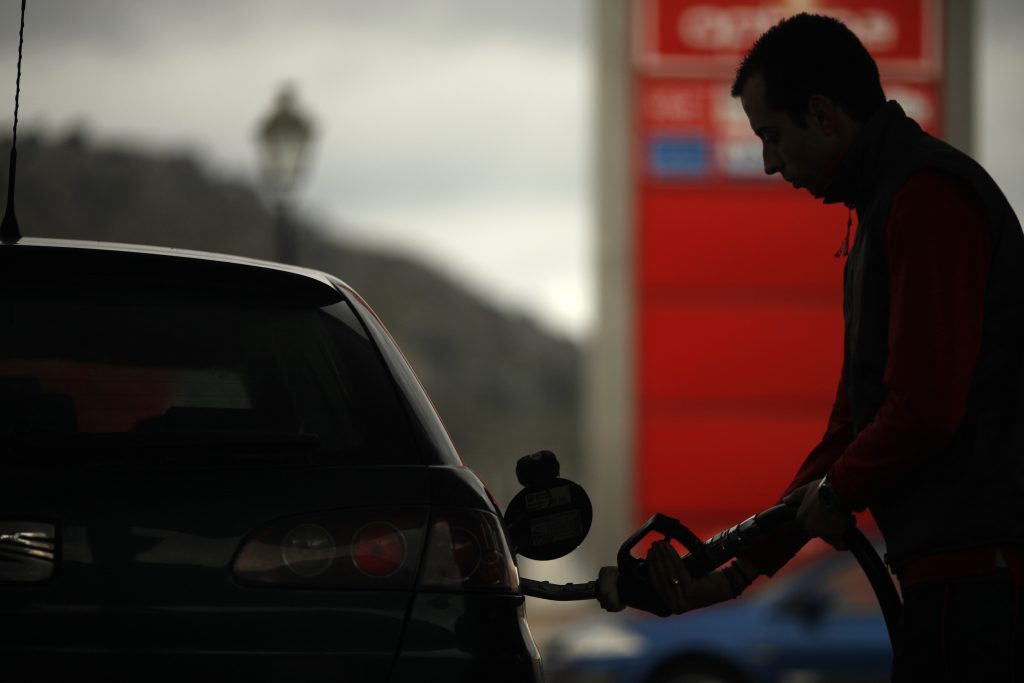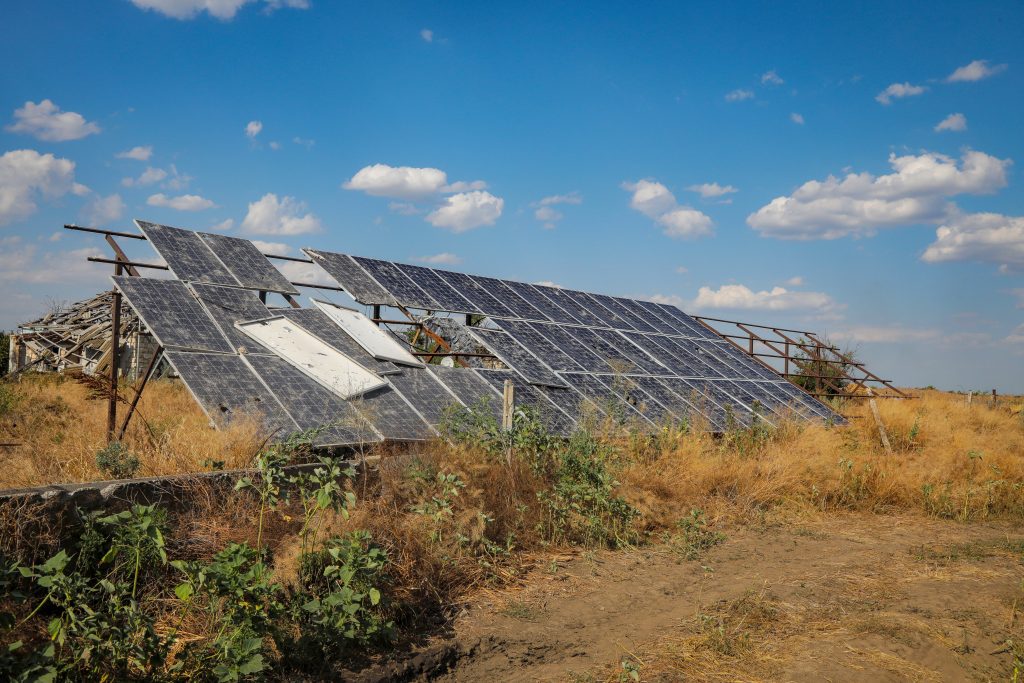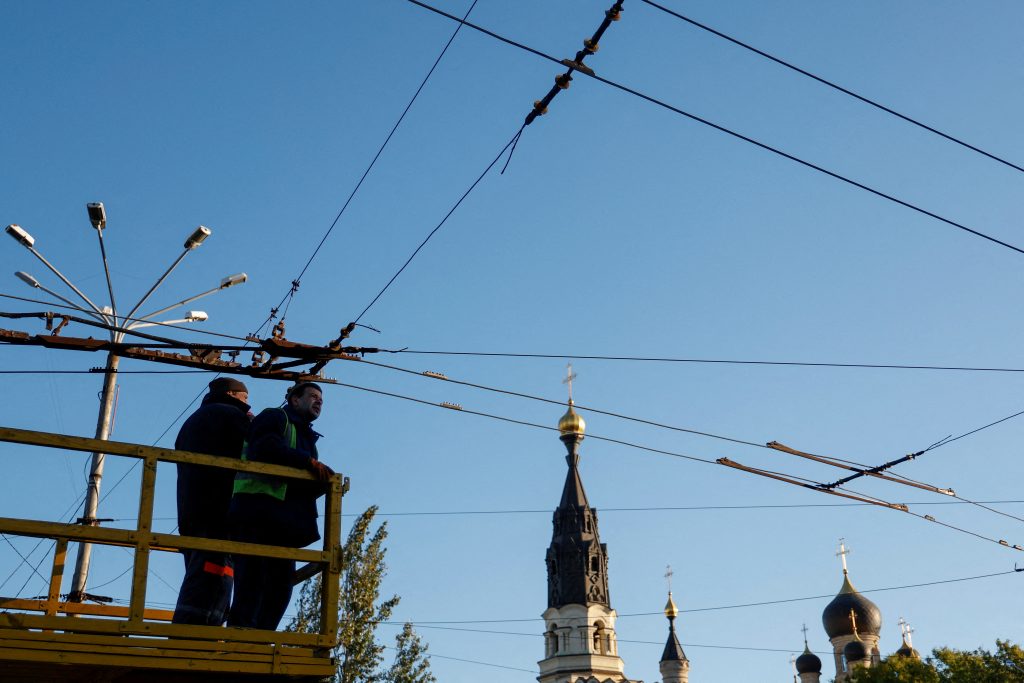Russia’s February 2022 large-scale invasion of Ukraine and the ensuing, Kremlin-engineered energy crisis across the EU posed unprecedented strategic, security, and energy challenges to the Transatlantic community for the past 16 months.
As Russia cut 80% of its historic natural gas deliveries to Europe last year, the continent was forced to switch, virtually overnight, from its historic reliance on Russian hydrocarbon imports to a diversification of sources.
Ultimately, Putin’s energy gambit against Europe failed, as the crisis accelerated the construction of new import terminals for alternative liquefied natural gas (LNG) as well as the deployment of renewable installations. Moreover, due to years of energy security investment and planning by many EU member states, and quick investment by others, the Kremlin’s attempt to unleash widespread energy instability across the EU wasn’t able to limit the foreign policy latitude of European leaders to support Ukraine as Putin’s inner circle likely hoped.
For the first time, wind and solar generated a fifth of Europe’s total electricity last year, overtaking natural gas.
While the EU was able to weather the storm, supply shocks also lifted Europe’s energy costs to record levels. These increased costs took a heavy toll on industrial production, pushing up inflation and hitting ordinary end consumers.

In Ukraine, Russia pointed its missiles and drones against power plants, transmission lines, and transformers, which plunged millions of consumers in the dark and left them without heating and water throughout the winter months. Since the start of the war in February 2022, systematic attacks wiped out 90% of renewable capacity and destroyed half of the transmission lines and generation facilities. Additionally, the occupation of the Zhaporizhzhya nuclear power plant, Ukraine and Europe’s largest, is still used as a weapon to threaten the safety of the planet.
Russia paired widespread kinetic strikes against Ukrainian energy facilities with increased activities by Russia’s alleged intelligence fleet across the North and Baltic seas to probe and menace EU offshore energy and critical infrastructure. Taken together, these continued Russian activities further underscore the need to increase energy infrastructure protection, with policy development and implementation in this area given equal priority to security of supply plans developed by Brussels over the years.
Acknowledging the unparalleled challenges, but also the rare opportunities that the events of 2022 opened for the Transatlantic community, the Democratic Resilience program at the Center for European Policy Analysis (CEPA) has set up a dedicated task force to provide meaningful analyses of the rapidly evolving energy security landscape across the continent, and to develop practical and implementable prescriptions for energy policy responses that can be taken across Europe to increase the continent’s short- and long-term resiliency to Russian energy weaponization.
The group, co-chaired by non-resident senior fellows Dr. Benjamin L. Schmitt and Dr. Aura Sabadus, brings together an array of high-profile experts from government institutions, leading universities, think tanks, NGOs, and the industry to help address Europe’s energy security challenges. CEPA has convened this group to draw on and highlight some of the most intimate knowledge and experience on the topic that the Transatlantic community has to offer, to provide a tangible contribution to the wider international debate and aid policymakers in their assessments of facts during the decision-making process.
For 2023, the group established three priority areas for research:
A. Establishing a blueprint for the reconstruction of Ukraine’s energy sector
B. Increasing the protection of Europe’s energy infrastructure
C. Supporting an energy secure transition for Europe
The team selected three work streams based on suggestions from members and will include comprehensive analyses and action plans. Likely areas of specific focus are summarized as follows:
A. Ensuring Resiliency and the Reconstruction of Ukraine’s Energy Sector
Despite Russia’s ongoing war in Ukraine, there is now general acceptance the country’s reconstruction work should start imminently.
Inevitably, with the energy sector suffering billions of dollars in damages, the odds of attracting high investment interest will be very high, thus creating the need to lay down a vision for rebuilding the industry.
We acknowledge the importance of establishing a new, decentralized energy system made up of green industrial clusters, which would build on Ukraine’s strengths while creating operational resiliency to the continued threat posed by Russian military actions against critical infrastructure across the country.
These industrial clusters include a significant wind and solar potential, a fertile landmass that would encourage large-scale investments in biomass, bioenergy, and biomethane; and a complex gas infrastructure, which could sit at the heart of Europe’s own energy security and energy transition.

We also acknowledge Ukraine’s inspirational pool of human capital. Young, educated professionals could oversee and carry forward Ukraine’s integration of energy and digital assets to establish a modern industry championing new technologies such as small modular reactors, smart grids, hydrogen, and synthetic gases.
Nevertheless, we also acknowledge potential risks for corruption and increased political influence, which could limit the international appetite for investments and sidetrack the country from following its path of modernization and integration with EU energy regulatory standards. These are a key component of Ukraine’s future accession to the EU and the country’s broader Euro-Atlantic aspirations.
For the short-term focus we propose:
1. Assessing the energy infrastructure damage from Russian kinetic strikes and spelling out the immediate and mid-term needs to protect and rebuild the infrastructure.
2. Highlighting the importance of increased connectivity between Ukraine and European power and gas networks for enhanced security of supply and as a source of additional revenue. On the electricity side, we believe Ukraine-EU interconnectors could generate about 3GW of bidirectional interconnection capacity.
3. Defining a role for Ukraine as a provider of storage capacity, which would allow European companies to store additional supplies of gas. Ukraine may also take on the additional role of provider of strategic storage capacity for emergency supplies. The reserves could be modeled on the US’s Strategic Petroleum Reserves (SPR) and help protect Europe from unforeseen disruptions, such as those seen last year.

4. Developing financial instruments, which would shield investors and companies interested in protecting gas in storage from political and war-related risks. Such insurance requires government support and should be a priority for Western partners.
5. Improving corporate governance and transparency at energy state-owned enterprises to minimize the risks of political interference and potential corrupt practices.
For the mid-to-long-term focus, we propose:
1. Returning to market-based arrangements for the electricity and natural gas sectors in preparation for integration in the EU’s single energy market.
2. Accelerate cooperation with the US nuclear companies to develop new nuclear projects in Ukraine, which are based on new technologies (SMRs).
3. Preparing the gas transmission infrastructure for the expiry of the Russian gas transit contract at the end of 2024.
4. Outlining concrete steps to attract investments in Ukraine’s oil and gas sectors, as well as in raw materials, highlighting the importance of Ukraine to Europe’s green transition. In this context, we aim to develop a concept for support schemes to create economic value chains, instead of simply exporting the raw materials.
5. Providing a roadmap for the energy transition, focusing on the establishment of an emissions market, the expansion of biomethane production, and the scaling up of electrolysed hydrogen production.
6. Providing a vision for the regeneration/reconstruction of industrial and mining areas, which have suffered as a result of the war and the phase out of coal production.
We recognize that the rebuilding of Ukraine’s energy sector will also hinge on the ability of international donors to inject funds into the industry.
We believe Western partners have an opportunity to raise significant funds by freezing and seizing assets belonging to companies associated with the current Russian regime or companies that continue to trade with sanctioned individuals or entities.
As a result, we believe that the reconstruction of Ukraine is inextricably linked to closing the loopholes on Russian sanctions evasion, which allow the Kremlin to continue raising funds to support the war.
Our analysis proposes to determine the policy options for Europe’s future energy relations with Russia and assess the following:
1. Recovering an arbitration award for Ukraine’s lost assets following Russia’s annexation of Crimea and holding Russia accountable for monetary damages inflicted as part of its war against Ukraine.
2. Creating next steps to end European dependence on Russian pipeline gas and LNG and the effect on countries that continue to import LNG, such as Spain, France, and Belgium; or Austria and Hungary, which depend on gas imported via the TurkStream pipelines.
3. Blocking the emergence of a Russian gas hub in Turkey and working with Ankara to provide access to alternative certifiable non-Russian gas to Central and Eastern Europe.

4. Ending European dependence on Russian energy-intensive imports such as oil products and fertilizers (ammonia, urea, phosphates). Of particular interest to the analysis will be the establishment of an EU Carbon Border Adjustment Mechanism (CBAM) in a manner that prevents Russia from carbon dumping through its energy-intensive exports (eg metals, fertilizer, petrochemicals), and supports Ukraine in investing in low-carbon production.
5. Extending sanctions against leading Russian oil, gas, and energy companies (e.g. Rosneft, Gazprom, Lukoil, Novatek, Tatneft, Zarubezhneft, Transneft, Rushydro, Rosatom, Sibur), which act as agents of the Russian state and are key sources of finance for Russia’s invasion. At the same time, encouraging the rapid winddown of any remaining Western firms providing energy technology support to these Russian state-owned enterprises.
B. Increasing Energy Infrastructure Protection Across Europe and the Surrounding Maritime Domain
The dramatic sabotage incident of the Nord Stream pipelines that remains under investigation, as well as Russia’s attacks on Ukrainian energy infrastructure and probing of offshore European energy infrastructure, have raised concerns, which, only a few years ago, might have been unthinkable for energy sector stakeholders.
Along with cyber threats, physical risks to energy infrastructure are part of the new reality that countries are facing.
In this context, we propose comprehensive analyses on identifying existing and potential risks, including taking a lessons-learned approach from Ukraine and developing policies and mechanisms to bolster security.
More concretely, our work will draw on expertise from energy and defense specialists associated or collaborating with CEPA and will focus on:
1. Identifying urgent lessons learned from Ukraine’s infrastructure cyber and physical protection experience to increase critical energy infrastructure protection in EU countries, as well as contracting parties of the energy community such as Moldova and Ukraine.
2. Identifying the top onshore and maritime energy infrastructure vulnerabilities and developing comprehensive best practices to mitigate risks that could lead to attacks and subsequent energy insecurity. The analysis proposes to focus on the security of energy infrastructure in Europe’s maritime periphery.
3. Outlining means to discourage or deter interference with our infrastructure. In this instance, some scoping of penalties, sanctions, or physical countermeasures would appear appropriate.
4. Examining how to promote greater cooperation and best practices sharing between the public and private sectors.
5. Identifying the best means to increase energy infrastructure protection and security collaboration between civil energy operators and NATO/national European military forces.
6. Assessing the need to build mandatory stockpiles of equipment, systems, and components to maximize the resilience of energy systems in case of infrastructure attacks.
7. Developing mechanisms to identify and attribute cyber and physical attacks against European energy infrastructure. We propose the creation of a database of identified attacks and their key characteristics.
8. Outlining means to implement enhanced inspection of old tankers of dubious seaworthiness, which may be used by Russia to transport and trans-ship oil and oil-derived product. Our analysis will investigate how to enforce compliance costs on uninsured ships in the event of a spill by targeting the end beneficiaries of the oil sold globally.
9. Drawing insights from the upcoming Table Top Exercise Coherent Resilience 2023 Baltic (CORE 23-B) organized by the NATO Energy Security Centre of Excellence (NATO ENSEC COE) together with the Joint Research Centre of the European Commission (JRC) and the US Naval Postgraduate School (NPS). The exercise will focus on addressing critical energy infrastructure protection (CEIP) of the Baltic states and focus on maritime and offshore energy installations in the Baltic Sea.
10. Determining how to best bolster Moldova’s energy security, including critical infrastructure protection and diversification measures.
C. Supporting an Energy Secure Green Transition for the EU
While acknowledging the priorities associated with rebuilding Ukraine’s energy sector and protecting Europe’s electricity, renewables, and hydrocarbon import infrastructure, we also recognize the long-term goals of achieving a successful energy transition on both sides of the Atlantic to contribute to tangible progress on addressing the climate crisis.
In this context, we will gear our work toward identifying key investment needs, analyzing whether supporting policies are fit for purpose, and sketching a vision where current arrangements are upended and replaced by decentralized, smart systems in which consumers and producers play equally important roles.
We also believe that as the global energy transition race intensifies, Transatlantic partners can find points of convergence, such as creating an integrated cleantech market.
Our studies propose to analyze a variety of angles:
1. Assessing the role of nuclear and gas/LNG in the EU’s green energy transition. Mapping key needs in short- to mid-term investments and avoiding redundancy.
2. Comparing EU, US, and Chinese climate politics and subsidy packages.
3. Analyzing what role the EU’s green energy transition will have in long-term European decoupling from Russian gas.
4. Assessing the leading players and the potential technological pathways for decarbonizing hard-to-abate industries (heavy industries, aviation, maritime shipping, heavy-duty trucks, etc.).
5. Understanding the impact of the EU green energy transition on the EU energy market and existing dynamics of market competition.
6. Assessing the possibility of creating an integrated Transatlantic cleantech ecosystem.
7. Assessing the role of the North Sea basin in the green transition.
8. Examining supply chain issues (potential risks and opportunities) of renewable energy sources, along with reducing risk on acute critical mineral dependencies.
9. Analyzing the extent to which the EU green energy transition will shape future relations with countries such as China, Russia, Saudi Arabia, and Turkey.
10. Building a roadmap for the energy infrastructure of tomorrow to align with security and green transition objectives.
Benjamin Schmitt is a Senior Non-Resident Fellow at CEPA and a Senior Fellow in the Kleinman Center for Energy Policy at the University of Pennsylvania.
Aura Sabadus is a senior energy journalist who writes about Eastern Europe, Turkey, and Ukraine for Independent Commodity Intelligence Services (ICIS), a London-based global energy and petrochemicals news and market data provider. The views expressed are her own.
CEPA is a nonpartisan, nonprofit, public policy institution. All opinions are those of the author(s) and do not necessarily represent the position or views of the institutions they represent or the Center for European Policy Analysis.




